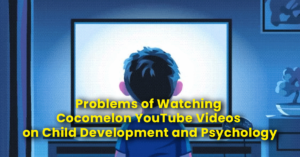
In today’s digital age, screens are everywhere—phones, tablets, TVs, and computers are part of our daily lives. While these devices offer entertainment and educational content, they can also pose risks, especially for young children. One emerging concern among parents and experts is “virtual autism,” a term that links excessive screen time with developmental delays in toddlers.
What is Virtual Autism?
Virtual autism refers to autism-like symptoms in toddlers caused by excessive screen exposure. Unlike traditional autism, which is a neurodevelopmental disorder with genetic and environmental causes, virtual autism is believed to stem from environmental factors, particularly prolonged screen use.
Signs and Symptoms
Toddlers who spend too much time in front of screens may exhibit symptoms similar to autism spectrum disorder (ASD). These include:
- Delayed Speech Development: Limited interaction with parents and caregivers can hinder language acquisition, leading to delayed speech.
- Poor Social Interaction: Lack of face-to-face communication may result in difficulties in socializing and understanding non-verbal cues.
- Reduced Attention Span: Constant exposure to fast-paced digital content can affect a child’s ability to focus on real-world tasks.
- Repetitive Behaviors: Similar to children with ASD, toddlers might engage in repetitive actions, such as tapping or spinning objects.
- Limited Imagination: Excessive screen time can stifle creativity and imaginative play, which are crucial for cognitive development.
Causes of Virtual Autism
The rise of virtual autism can be attributed to several factors:
- Increased Screen Time: Toddlers are spending more time on screens than ever before, often as a result of busy parenting schedules or the easy availability of digital devices.
- Reduced Human Interaction: With screens replacing traditional play and communication, toddlers are missing out on vital human interaction necessary for emotional and social development.
- Lack of Outdoor Play: Physical activity and outdoor play are crucial for a child’s overall growth. Excessive screen time often replaces these essential activities.
Preventing Virtual Autism
While the term “virtual autism” is still being studied, taking steps to limit screen time can benefit your child’s development:
- Limit Screen Time: The American Academy of Pediatrics recommends no more than one hour of screen time per day for children aged 2 to 5 years. For younger toddlers, it’s best to avoid screen time altogether.
- Encourage Playtime: Engage your child in creative and physical play. Activities like drawing, building blocks, and outdoor games foster cognitive and social skills.
- Promote Face-to-Face Interaction: Spend quality time with your child, encouraging conversations, storytelling, and other interactive activities that promote language and emotional development.
- Be a Role Model: Children often mimic adult behavior. Reducing your own screen time can set a positive example for your toddler.
Conclusion
Virtual autism is a growing concern, with potential impacts on a child’s speech, social skills, and cognitive development. While more research is needed to fully understand this phenomenon, parents can take proactive steps to reduce screen time and encourage healthy development. By fostering a balanced environment with plenty of human interaction and play, you can help your child thrive in the real world, away from the screens.



